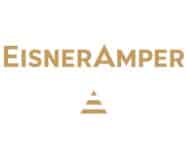Patent infringement analysis is only as good as the expertise of the analyzers–specifically, their understanding of United States patent laws. According to the Office of the General Counsel for North Carolina State University, the entity which defends the ownership rights of products/services invented by university employees, a U.S. patent gives the inventor “the right to exclude others from making, using, selling or offering to sell an invention within the U.S. for a certain period of time.” Patents, by type, are labeled “utility…design…(and)plant.” The federal statute containing this definition is 35 USC 154(a)(1).
As regards what inventions can be patented, U.S. law 35 USC 101 explains that “a new…process, machine, composition of matter, or an improvement on such items” may receive a patent after application to the United States Patent and Trademark Office (USPTO). These new products and processes must also be “useful…novel (very different from all earlier, similar products/processes)…(and) non-obvious (‘surprising and significant’)” to a person who has “ordinary inventor skills.”
PATENT TYPES–
- UTILITY PATENTS–cover the “working features” of the invention,
- DESIGN PATENTS–cover the “aesthetic appearance,” but not specifically how the invention works,
- PLANT PATENTS–cover man-made (asexual) changes to (growing) plants, if these changes are “novel” and “non-obvious.” Some “genetic” plant alterations may receive “utility patents”–if these changes meet the complete “utility” patent definition.
PATENT TIME LIMITS–
According to 35 USC 154(a)(2), “utility patents last for 20 years from the date of application filing,” and design patents continue “14 years from the date granted (35 USC 173).”
STEPS TO MAKE A GREAT IDEA PATENTABLE–
For an inventor to legally own a patent, his/her unique, useful idea must first be “reduced to practice.” This means the inventor must “physically construct” his imagined product and test it enough to ascertain that it works as designed. This initial product-development step is called “actual reduction to practice.” A second step–labeled “constructive reduction to practice”–means the inventor completes his USPTO application in such a detailed way that any person “reasonably skilled in the art (industry)” which includes the product is able to “make or use” this new invention.
SWIFTNESS OF APPLICATION–
An inventor may “lose the right” to his/her patent (see 35 USC 102(b)) if application to the USPTO is not turned in within a year from: 1) the general public’s “first use” of the product, 2) the product’s first “offer for public sale,” 3) the “first printed publication” regarding the invention and its uses and specifications.
THE APPLICATION PROCESS–FILE WITH U.S. PATENT OFFICE AND/BUT–
- initially research other patents for inventions similar to yours to ascertain that yours is “not too closely related,”
- declare you are the “original and first inventor,”
- include product drawings and details that give “full, clear and concise descriptions.”
PATENT INFRINGEMENT–
A person who succeeds in patenting a product/service/composition which you believe is identical to your patented invention can be–under 35 USC 283-284–sued for “civil damages,” including royalties (monies your patent should have earned) and attorney fees. The judge may also order (i.e., an injunction) the infringer to stop manufacturing and marketing his product until the case is decided.
Patent infringement, unfortunately, is common. Certain legal groups are expert at thoroughly researching and analyzing your–and your opponent’s–patent applications to avoid, or to succeed within, the court process. These groups often include engineers, chemists, physicists, medical-device manufacturers and attorneys who have the most up-to-date knowledge within their fields.

